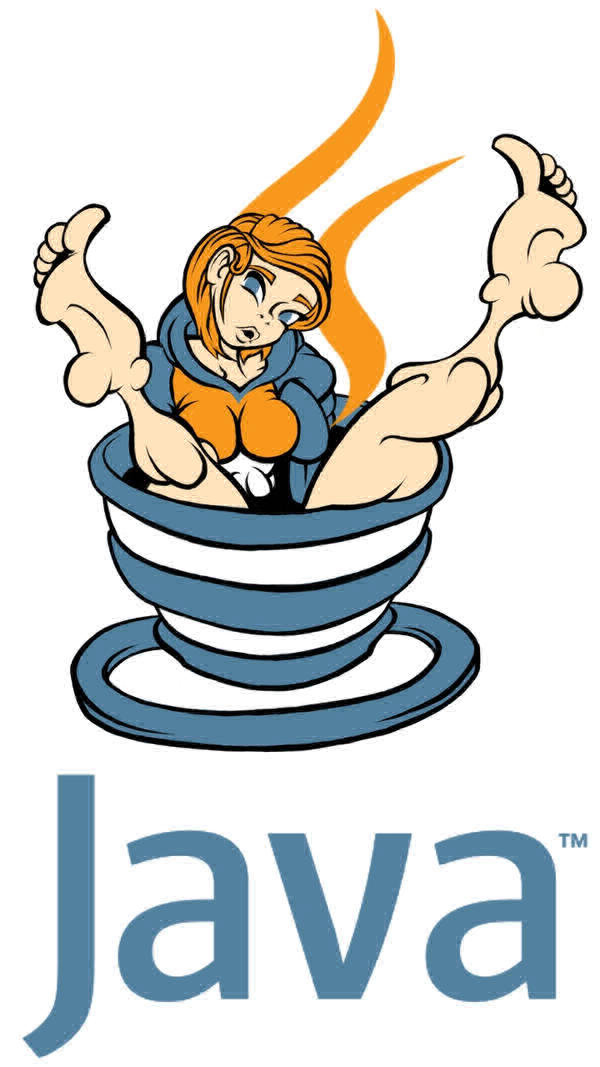java编程代写, java代做, java编程作业代写, java程序作业代写
CS 125 Java intro assignment
● BasicUser.java containing all methods for Task 1
● VIP.java containing all methods for Task 1
● ServerQueue.java containing all methods for Task 1
● EasterEgg.java containing all methods for Task 2
Task 1
For Task 1, you will be working with a virtual server queue(s) that allows Basic Users and VIP
Users to join and exit the queue.
You will be using abstract and concrete classes, static and non-static methods, and ArrayLists.
Furthermore, you do not need to worry about deep copies.
The source folder has those files: BasicUser.java, ServerQueue.java,
ServerQueueTester.java, User.java, VIP.java. You will be implementing several
methods within BasicUser.java, ServerQueue.java, and VIP.java, and you will be
testing those methods in ServerQueueTester.java. For Task 1, you need to submit
BasicUser.java, ServerQueue.java, and VIP.java.
ServerQueueTester.java
Within ServerQueueTester.java are a few test cases for the ServerQueue class. As you
are implementing BasicUser.java, ServerQueue.java, and VIP.java, you should test
thoroughly to make sure that your program is functioning as expected. We will not be
collecting ServerQueueTester.java.
User.java
The User class is an ABSTRACT class that maintains simple user information. This file is
already completed for you, so you must NOT make any changes to this file. Within the
User class, there is one private member variable - name. We also provide a getter and setter
method for the name, and we provide an abstract method that you will have to implement in the
subclasses BasicUser and VIP. Be sure that you understand everything that is given within
this file!
BasicUser.java
The BasicUser class is a CONCRETE class that maintains information about a basic user and
that EXTENDS the User class. This file contains NO extra member variables.
We provide you with one getter function that simply returns false. Please read the method
carefully and understand its purpose.You must implement the following 2 methods:
1. public BasicUser(String name)
This constructor should simply set this.name to the parameter name. However, it is
not that simple because inside the User class, this.name is private. Figure out how to
set this.name to be the parameter name. HINT: It should only take one line of code.
2. public String getInformation()
This method should return the concatenation of "BASIC USER: " and this.name.
For example, if this.name was "Henry Doe", then this method should return
"BASIC USER: Henry Doe". Keep in mind that there is a space between BASIC
and USER, and that there is a space after the colon (:).
VIP.java
The VIP class is a CONCRETE class that maintains information about a VIP user and that
EXTENDS the User class. This file contains 1 extra private member variable -
hasPriority. hasPriority is used to determine if the VIP user has priority within the
queue. We also provide you with hasPriority's respective getter method.
You must implement the following 2 methods:
1. public VIP(String name, boolean hasPriority)
This constructor should simply set this.name to the parameter name, and this
constructor should also simply set this.hasPriority to the parameter
hasPriority. Learning from what you did in the BasicUser class, figure out how to set
this.name as well as this.hasPriority.
2. public String getInformation()
This method should return the concatenation of "VIP: ", this.name, and either
PRIORITY_STR or NO_PRIORITY_STR depending on the priority status of the VIP
user. For example, if this.name was "Claire Doe" and this.hasPriority was
false, then this method should return "VIP: Claire Doe - NO PRIORITY".
Keep in mind that there is a space after the colon (:).
ServerQueue.java
Within ServerQueue.java, there are 2 private member variables given to you:
●
private String name - the name of the server
●
private ArrayList
NOTE: The User objects in queue will always be valid User objects (no null Users or invalid
Users).Take note of the declared types of name and queue. Do NOT change their types.
We also provide you with two getter methods. Please carefully read and understand the
methods.
You must implement the 5 following methods:
1. public ServerQueue(String name)
This constructor should set this.name to be the parameter name, and this constructor
should also set this.queue to be a new, empty ArrayList.
2. public void clearQueue()
This method should either set this.queue to be a new, empty ArrayList, or call the
.clear() method on this.queue. In other words, this method should simply clear
the queue (without setting the queue to null).
3. public void appendToQueue(User user)
This method should append (or add) the parameter user to the end of this.queue.
For example, consider the following queue (which is NOT quite a memory model
diagram) where the left is the front of the queue:
Appending a VIP user named "Mary" with hasPriority as true would result in the
following queue:
4. public User removeFromQueue()
This method should first check if there is a VIP user in the queue that has priority (i.e. a
VIP user with hasPriority == true). If there is such a VIP user, then you should
remove and return the first instance of that VIP user. If there is NOT such a VIP user,
then you should remove and return the first user (either VIP or BasicUser - does not
matter) at the front of the queue (which is at index 0).
In other words, remove and return the first priority VIP user if possible. Otherwise,
remove and return the user at the front of the queue.
NOTE: You can assume that there will always be at least one User in the queue when
calling this method.For example, consider the following queue where the left is the front of the queue.
Calling removeFromQueue() on that queue would result in the following queue:
where the VIP user "Mary" would be returned.
5. public static void mergeQueue(ServerQueue q1, ServerQueue q2)
This method should append (or add) all the Users from q2's queue to the end of q1's
queue while maintaining their same order. Furthermore, this method should clear q2's
queue.
For example, if q1's queue looked like the following:
and if q2's queue looked like the following:
Then, after calling mergeQueue, q1's queue should look like:
and q2's queue should be completely empty.Task 2
An Easter Egg race is afoot and you're eyeing the first prize! Unlike a regular hunt, you know
exactly where the eggs are, but for you to be able to reach the finish line in time, you decide
NOT to collect two consecutive eggs in a row. Each egg is worth ten times the position that
the egg is located at. For example, the first egg is worth 10 points, the second egg is worth 20
points, the third egg is worth 30 points, and so on. If you're lucky enough, you can find golden
eggs which are worth double that of a regular chocolate egg.
An example ArrayList would be ['Chocolate', 'Chocolate', 'Golden',
'Chocolate', 'Golden', 'Chocolate', 'Chocolate'] and their potential scores
would be [10, 20, 60, 40, 100, 60, 70]. As you can see, the 1st golden egg (at index
2) has a point of 2 * 30 = 60.
In order to win, you would have to maximize the score you could possibly get. Keeping in mind
that you CANNOT pick two consecutive eggs in a row, you would choose the eggs that give you
the scores - 10 + 60 + 100 + 70 = 240 (which are the first, third, fifth, and seventh indices
respectively).
Please download the starter code from here. Ensure that there are 2 files:
EasterEgg.java and EasterEggTester.java.
EasterEggTester.java
Within EasterEggTester.java are a few test cases for the EasterEgg class. As you are
implementing EasterEgg.java, you should test thoroughly to make sure that your
program is functioning as expected. We will not be collecting EasterEggTester.java.
EasterEgg.java
Within EasterEgg.java, you will be required to implement the 2 following methods:
1. public int[] calculateScores(ArrayList
Read BOTH (a) and (b) before implementing this method!
(a) This method will be used to generate and return the scores for each egg as an
array, when the input given is an ArrayList of Strings that can could either be
'Chocolate' (to denote regular chocolate eggs) or 'Golden' (to denote
golden eggs worth double the regular score).
An example ArrayList that would be passed to the method would be:
['Chocolate', 'Chocolate', 'Golden', 'Chocolate',
'Golden', 'Chocolate', 'Chocolate']
and the scores array to be returned would be: [10, 20, 60, 40, 100,
60, 70].NOTE 1: Keep in mind - for a chocolate egg at index i, its score would be
(i+1) * 10, and for a golden egg at index i, its score would be worth (i+1)
* 20.
(b) Exception Handling: Consider the following edge case - while you are iterating
through the ArrayList parameter eggs, if eggs contained a string that was NOT
"Chocolate" or "Golden", then you should handle this edge case via an
Exception.
While reading in the inputs from the ArrayList, make sure to throw a new
Exception with the message "Invalid Easter Egg" if such an erroneous
string is encountered. Likewise, in EasterEggTester.java, you would then
need to implement try and catch statements in order to print out the
appropriate message. We already provide you with a try-catch block for
obj1, so if you write additional tests that call calculateScores, then you
would need to surround them in a try-catch block.
NOTE 1: Make sure that the error message inside the new Exception is the
same, exact error message as above.
2. public int maxScore(int scores[], int idx)
This method should RECURSIVELY calculate the highest score possible when the
condition of skipping two eggs in a row is followed. In other words, if an egg at index
i is chosen, then egg i+1 cannot be chosen. The scores array generated in the
previous step should be passed as a parameter. To help with recursion, the second
parameter you pass in MUST initially be the first index, 0 (refer to the tester file to see
the value of idx being passed in to the maxScore call). This is important because our
tests will pass in idx as 0.
For the example scores array above, you would return 240 as the highest score
because you would choose 10 + 60 + 100 + 70.
Here's another example - consider the scores array [10, 20, 60, 40, 50, 120].
You would return 190 as the highest score because you would choose 120 + 60 +
10.
HINT: Think about your base case (i.e. when do you stop recursion), and what
respective recursive calls should you make? Knowing that you cannot choose two eggs
in a row (i.e. you cannot choose i and i+1), what indices should you check instead?








